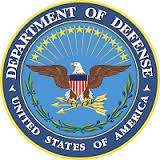Navy Adm. Charles A. Richard outlined threats the nation faces from Russia, China, Iran and North Korea as he discussed the capabilities and integration the Defense Department needs in its warfighting strategies, plans and operations in a taped speech presented at the Space and Missile Defense Symposium yesterday.
“War is over. And we’re entering a sustainment phase in the war on terror. But we’re now in an era of great competition,” Richard said. “We as a nation in the military need to focus on the threats in front of us. And those threats go all the way down to the gray zone area below traditional conventional armed conflict.”37:53
The nation cannot wait for conventional conflict to break out before it starts thinking about nuclear deterrence, the Stratcom commander said.
“Make sure an adversary doesn’t miscalculate where they believe they can win with a jump in escalation,” he said. “This is why U.S. Strategic Command exists. We are here to deter great power war in this era of great power competition.”
The strategic environment has changed from the Cold War through the war on terror and now into great power competition, Richard said. The United States must ensure that its strategies, plans, capabilities and operations are integrated across all domains and the full spectrum of conflict, he added. “We must hone our capabilities based on the threats we face,” he said.
The fact that the nuclear triad still provides the flexibility to address changing threats in this new era is a testament to its original designers and everyone who has maintained, operated and sustained it over the lifetime of these systems, the admiral said.
“I am laser-focused on modernizing our triad and its supporting infrastructure like nuclear command, control and communications,” he said. And as our adversaries develop these advanced weapon systems, he added, the United States must develop and build capabilities to counter these threats.
Richard said 21st century deterrence is a lot more than “just” nuclear. “It’s deterring multiple adversaries of all domains,” he explained. “Strategic deterrence is the highest-priority mission of the Department of Defense. It is foundational to our national defense and underpins every U.S. military operation around the world.”
That is based on the most fundamental assumption of all U.S. strategies and plans, he said: that strategic deterrence will hold.
“We like to think deterrence will hold in ways we haven’t tested it in before,” he said. “This assumption is going to be tested in new ways. We’re going to need that triad or recapitalize the triad. We’re going to need combat-ready forces, and we’re going to need missile defense.”
Effective missile defense deters adversaries from attacking because they know they have little chance for success and at potential risk, Richard said, adding that the United States has to rethink how it does business.
The nation’s integrated approach to deterrence must continue to improve, the admiral said. Missile defense capabilities are vital to deterrence strategy, he added, and must be integrated and tailored to the threats ahead, the admiral said.
Stratcom is working to integrate planning and execution processes through competition, crisis and conflict, he said. “We want everyone across the department to continuously consider the risk of strategic deterrence failure,” he said. “The progress … and the relationship between government and industry are important to our national defense and integrated strategic deterrence.”
To be successful, DOD must make sure it integrates its efforts in more than its planning and execution, but also with industry and in the whole government, Richard said.
“I ask each of you to work with your counterparts across the department, interagency and industry to find the best solutions for the complicated strategic environment we face. The threats are real,” he emphasized to the audience. “And because of everything you’re working on, we’ll be ready if conflict begins on our watch.”





